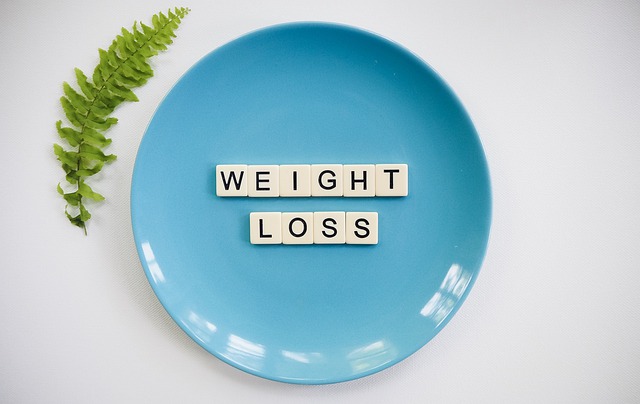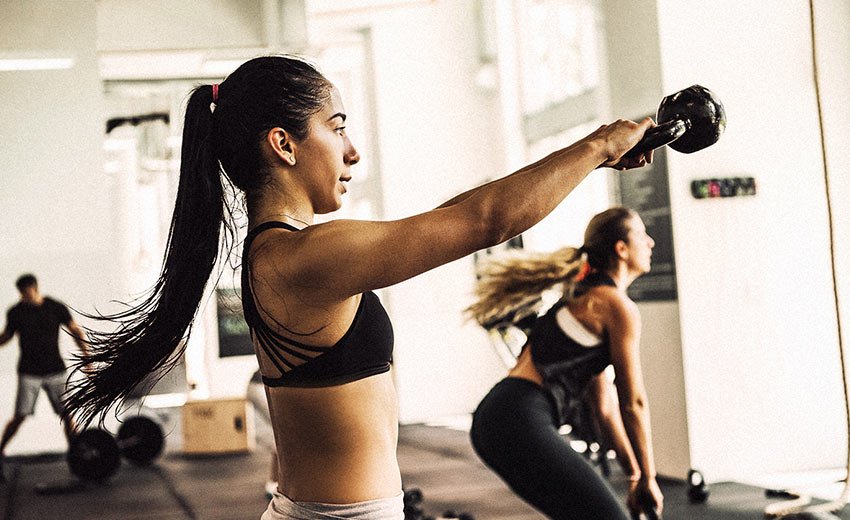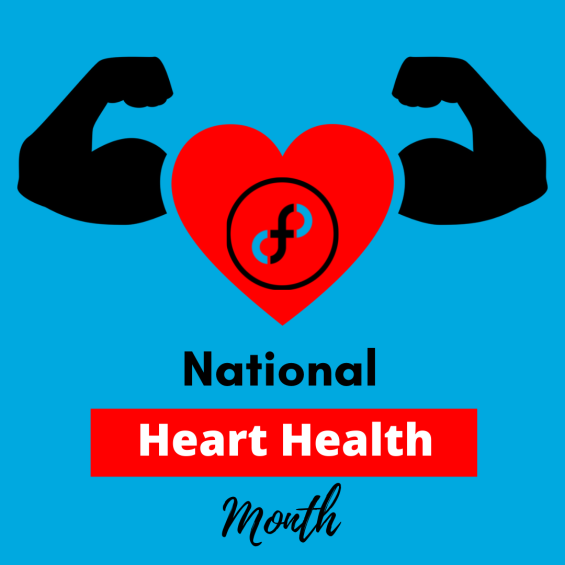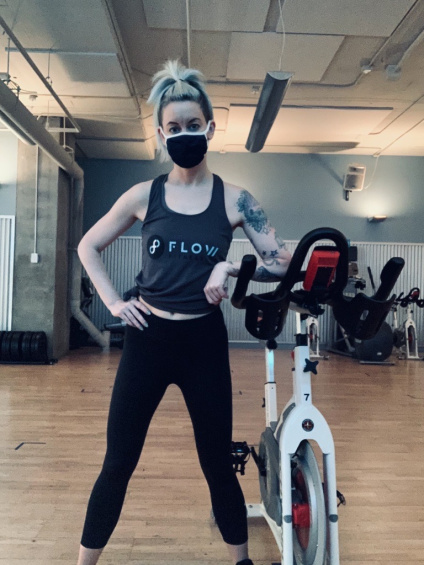Improve Performance and Reduce Fatigue
How To Have A Happier And Healthier Holiday Season
How Strength Training Can Help You Lose Weight and Keep It Off
What it’s like to be sober for 1 year
Flow Cycle instructor Catherine just celebrated her 1 year of sobriety and we wanted to share her experience to inspire others to live a healthier life.
What inspired you to give up alcohol?
To improve my overall health and mental well-being. I felt like drinking inhibited me from being active and fully present with life.
What was the your biggest challenge?
Feeling confident sharing my experience with others. It can be tough to go against what feels so engrained in our lives.
How did giving up alcohol impact your life?
I have new passions, deeper relationships and the inner strength to face the challenges life gives me now.
What advice would you give to others?
If you are thinking about making a big or small change in your life, know you have the tools to change within you. Take the first step – and ask for help along the way
Why Heart Disease is the Biggest Threat to our Health
While COVID-19 dominates headlines, heart disease is still the leading cause of death in the U.S. and accounts for two times as many deaths annually as COVID-19. Consider that heart disease significantly increases risk of death from COVID-19, and it is clear that heart disease is by far the biggest threat to our health yet is largely unaddressed.
Heart disease is preventable and studies estimate that almost 80% of cases could be prevented by implementing a healthy lifestyle. Regular exercise is the single best way to prevent heart disease and studies estimate it can reduce risk by up to 50%.
Regular exercise could save as many lives annually as deaths from COVID-19. No masks , shutdowns or vaccines are needed.
February is National Heart Health Month and we ask you to consider:
- Creating awareness of the risks of developing heart disease and how to prevent it
- Making lifestyle changes to improve your own heart health
Conquering Strenuous Exercise in a Mask
As many fitness lovers have experienced during the pandemic, exercise in a mask is possible. Enjoyable? Not exactly, but it’s do-able and becomes more tolerable with every workout.
Yoga, Pilates, Barre and some Strength Training workouts seem to be the mask-wearer’s preference as for the most part, the participant’s heart rate stays within manageable ranges. But what about more intense cardio?
As Flow Fitness’s Cycle Program Director, my biggest challenge has been convincing people that they’re going to be just fine participating in my classes while wearing a mask.
Earlier in the pandemic, not a lot was known about exercising in a mask. However, as more studies were conducted, it has been concluded that even intense exercise in a mask is not dangerous as long as the participant listens to their body. The body’s Oxygen and CO2 levels in a mask are at similar levels to those working out without masks.
We know it is safe, but how can we make it FEEL better?
The short answer is repetition (i.e. building up a tolerance to it). The more we practice something, the more it becomes routine. I’ll also share some of my own personal tips and tricks from teaching and taking Cycle and H.I.I.T in a mask for a few months:
Bring more than one mask!
Bring even more than two if you tend to sweat a lot. I wear a pre and post class mask that I do not wear during the actual workout. That way when class is over, I can switch back to my dry mask and chat with members without feeling gross. Those who bring multiple masks are less likely to rush off and can socialize with other members and the instructor when the hard work has concluded! Some people even bring two masks for the workout and switch halfway through to a fresh mask. I know this sounds like a lot of masks, but it can be a game changer in making the class more enjoyable!
Own a mask that is actually made for exercising.
Not all masks are created equal when it comes to strenuous workouts. Many established fitness apparel brands have taken the time to design masks for people who want to enjoy workouts in a gym during Covid restrictions. Take advantage! You would not join a class without proper equipment. The same goes for your mask.
Ease into it
When I’m participating in a high intensity class, I push hard but I know my limits. If it becomes hard to breathe with your mask on, simply back off. If you’re in Cycle class, turn the resistance down. If you’re in Team Conditioning and doing a tough cardio finisher, pace yourself if needed. With a mask on, I’m not always achieving the power levels that I would normally maintain in Cycle and I’m okay with that. It is important to remember that while there are restrictions, we still have a safe place to move our bodies and become stronger.
It may not be for everyone.
There are other physical barriers that may prevent some people from tolerating intense exercise in a mask, such as asthma or other chronic respiratory conditions. If you have any concerns regarding exercising in a mask, you should absolutely consult your doctor before participating in a high intensity class.
Pacing yourself, staying consistent, and having the right mask(s) will set you up for success in conquering tough workouts during Covid restrictions! As always, Flow trainers and instructors will be there every step of the way to encourage you and support you.
 CategoriesBlog Live Fit. Nourish. Uncategorized
CategoriesBlog Live Fit. Nourish. Uncategorized5 Behaviors That Support Weight Loss Goals
Being a personal trainer, I have seen clients try a variety of diets, such as keto, paleo and Mediterranean, with varied success. I can tell you with certainty that success had very little to do with what diet they were on. However, I have observed five common behaviors among those who were successful that can applied to any weight-loss regimen. If you are looking to lose weight and keep it off, here are five behaviors you should focus on:
Target consistency over perfection.
If you follow your plan 80% of the time, you will get better, more sustainable results than if you try to be 100% compliant. But be mindful—even if you make good choices throughout the week, you can quickly waste all that effort with weekend splurges. In addition, binging can change your body’s metabolism, forcing it to store extra calories again. So strive to be compliant 80% of the each day rather than 80% of each week.
Find ways to reduce stress.
Life is stressful on your mind and body, and weight loss can add additional stress. You’re asking your body to work hard, and changing your diet takes effort. Stress can lead to poor nutrition choices and low energy. To reduce stress, plan both your workouts and meals for the week in advance. You should also create a list of stress-relieving activities and set aside at least 15 minutes a day to complete them.
Focus on diet first, then exercise.
Weight loss starts in the kitchen. While many would prefer to work out more rather than change the way they eat, you can’t outwork a bad diet. Exercise will help expedite weight loss, as it burns calories and raises your metabolism, but any successful weight loss program needs to focus on nutrition first.
Doing less is better.
Complex diets can be overwhelming and cause additional stress. Focus on a few behaviors that will create a significant impact, such as cutting out late-night snacking, sweets or drinking, and do those well. If you try to do too much, you will end up doing a lot of things sub-optimally. This is a surefire way to waste energy and create more stress. Identify what is truly important and focus your energy on those few behaviors.
Get help!
If you’re serious about losing weight, you need help. A dietitian or health coach can save you lots of time creating meal plans, and a personal trainer can provide you with the most effective workouts. Getting professional help not only gives you expertise, accountability and support, but they also relieve a lot of stress—all of which greatly increases your chance of success.
Weight loss is hard; you will have setbacks, and that’s ok – don’t expect perfection. By focusing on these five behaviors, weight loss can not only be achievable, but also sustainable in the long term. Take control of your health and your fitness and don’t be afraid to ask for help. Learn more about our “Healthy Lifestyles Program” that will help you create habits around nutrition, exercise and stress relief that will last a lifetime.
 CategoriesBlog Live Fit. Move. Nourish. Uncategorized
CategoriesBlog Live Fit. Move. Nourish. UncategorizedWhat we can learn from the Japanese about health
Japan is widely considered one of the healthiest countries in the world, with one of the highest life expectancy rates (84 years, versus 78 in the U.S.). And while their older population should make them more vulnerable, Japan also has the fewest deaths, by far, due to Covid-19 when compared to other G7 countries: only 18 deaths per million (compared to over 1,000 per million in the U.S.).
While many experts believe cultural factors such as a homogenous society; no handshaking or hugs; and pre-existing use of masks have contributed to Japanese success against COVID-19, their population’s extraordinary health is also an important factor. As the Economist reports:
“Although the population of Japan is disproportionally elderly, and therefore potentially more vulnerable to Covid-19, it is also very healthy. Only 4.2% of Japanese adults are obese, a condition known to make the disease more lethal. That is the lowest rate in the OECD and one-tenth of America’s.”
Gyms aren’t as common in Japan as they are in the U.S., and the Japanese smoke and drink more than Americans. So how do they stay so healthy? I had the opportunity to live in Japan years ago, and can point to several cultural norms that we can learn from the Japanese to improve our health.
Focus on Health
In Japanese, the equivalent of “How are you?” is the phrase “Genki desuka?” This translates to “Are you healthy?” Imagine if you were asked about your health numerous times a day; wouldn’t that keep it top-of-mind?
For those of you old enough, you might remember the movie “Gung Ho” with Michael Keaton, where a U.S. car plant is acquired by a Japanese company. In the movie, the new Japanese owners unsuccessfully attempt to implement a morning exercise routine that they do in Japan. Japanese companies still value exercise and give their employees exercise breaks throughout the day.
Key Takeaway: Make health part of your daily discussion. Ask others about their health and what you can do to support them. And think about ways that you can implement healthy practices in your workplace or community.
Value Quality, Not Quantity
The Japanese are infamous for having high quality standards, and this includes their food. It’s virtually impossible to find low-quality food in Japan, even at McDonalds! The “bento” is a traditional Japanese meal that epitomizes the focus on quality over quantity. With high quality standards comes increased prices, as fresh fruit, vegetables and meats are notoriously expensive in Japan; however, high prices helps limit consumption and waste.
Key Takeaway: Resist the urge to “super-size” and focus on smaller quantities of higher-quality foods. Don’t be afraid to indulge in foods high in fat and protein, such as meats, cheese, nuts and avocados, which will help you feel “full” and avoid overeating.
Pro-tip: Eat at local restaurants that use local ingredients, and avoid fast-food and chain restaurants.
Eat Fresh Foods
While you can find a variety of pre-packaged foods in Japan, the Japanese emphasize home-cooked meals and fresh foods. It was typical for me to eat a salad at breakfast. Below is a picture of a traditional Japanese breakfast which typically includes fish, rice, miso soup, eggs and vegetables. This looks a lot healthier than a stack of pancakes covered with syrup and a side of bacon, right?
Key Takeaway: Focus on whole foods. You should have a serving of fresh fruit and/or vegetables at each meal. Even if you don’t have time to cook, make sure you always have some fresh fruit and vegetables on hand to supplement.
Pro-tip: Become a Community Supported Agriculture (CSA) member or get a weekly fruit and vegetable subscription to ensure you always have fresh fruit and vegetables on hand.
Walk and Bike More
Walking, biking and public transportation are the main forms of transportation in Japan, and they have one of the best public transportation systems in the world. (It helps when owning a car, parking and taxis are incredibly expensive.) Even if you are taking public transportation in Japan, you typically have a decent walk to and from your destinations, along with any transfers.
Key Takeaway: Before calling Uber or driving, see if walking, biking or public transportation is a feasible option. Not only will it improve your health, but you’ll save some money and the environment.
Portion Control
The Japanese have a phrase “hara hachi bun me,” which translates to “eat to you are 80% full.” This term originated in Okinawa and has been credited with the extraordinary health of Okinawans. Portions in Japan are much smaller than in the U.S., and we Americans constantly felt “hungry” when eating out. Perhaps it was not that the portions were too small, but rather, that our portions are too big! High food prices in Japan also help them to limit portion sizes.
Key Takeaway: Eating until you are 80% full is a simple yet highly effective way to control calories and lose weight. No calorie-counting or dieting is needed. Try it for a week, and you’ll notice a huge difference in the amount you consume and how you feel.
Pro-tip: Try using smaller dishes, which will help you limit portion sizes. When eating out, considering sharing your food.
McDonalds Drink Comparison
In American, our health is deteriorating; we reached an all-time high in obesity rates in 2020 at over 42%. Not only does this make us more susceptible to illness, such as heart disease and COVID-19, but it also takes a significant toll on our economy, as healthcare costs continue to rise. To improve our health, we need cultural changes that emphasize regular exercise and healthy eating habits. This can only happen with support from the government, businesses and communities.
What changes can you make to create a healthier society?
If you believe in wearing masks, you should also exercise regularly
Regular exercise can boost your immune system
You’ve probably heard that exercise can boost your immune system, but maybe you’re wondering how significant this is, and how much exercise you need to reap the benefits. Studies have consistently shown that regular exercise can not only significantly reduce your risk of infection, but also the severity of symptoms if you are infected. Exercise is more important than ever as the coronavirus pandemic continues, and in this post, we’ll explain how exercise can help keep you healthy.
How Exercise Affects Your Immune System?
You first need to understand how exercise effects your immune system. While scientists have yet to identify the exact reason why, there are several theories about why exercise boosts immunity, which is likely a combination of several factors:
- Physical activity may help flush bacteria out of the lungs and airways.
- Exercise increases the amount of white blood cells and their circulation within your body, so they can find pathogens and wipe them out.
- The brief rise in body temperature during and right after exercise may prevent bacteria from growing and may help the body fight infection better (similar to what happens when you have a fever).
- Exercise slows down the release of stress hormones, which can compromise your immune system.
- Exercise can improve sleep. Research has shown that sleep improves the efficiency of T-cells (a type of white blood cell) ,which help fight off pathogens like viruses and bacteria.
- Regular exercise can reduce sources of inflammation in your body that impair your immune system.
How Much Does Exercise Matter?
A 2019 scientific review in the Journal of Sport and Health Science found that exercise can improve your immune response, lower illness risk and reduce inflammation — but by how much? Studies show the impact can be quite significant:
- A 2018 study of 1,413 people in China found that those who reported exercising at least three times a week reduced their likelihood of getting a cold by 26%.
- Another 2018 study of 390 people found that those who were trained with an eight-week regimen of moderate exercise reduced their risk of acute respiratory illness by 14% and their number of sick days by 23%, compared with people who did not receive the exercise training.
- A study published in 2011 in the British Journal of Sports Medicine found those who did aerobic exercise five or more days of the week lowered the number of upper respiratory tract infections (such as the common cold) over a 12-week period by more than 40%.
How to Get the Most Out of Your Fitness Routine
Now that you know how impactful exercise can be, here’s how to maximize the benefits:
Exercise regularly. Long runs on the weekends alone won’t cut it. The benefits of exercise on the immune system are temporary, so you need to do it often to see the gains. You should emphasize frequency over intensity and duration, setting a goal of five or more times per week.
Moderate exercise is best. Most studies looked at aerobic activity, such as walking, running or cycling. There is less research on HIIT or strength training, but most experts believe they provide similar benefits.
Whatever you do, the key is to get your heart rate going, but to keep activity to a moderate level of intensity. If you’re doing a walk, make sure it is a brisk pace — but don’t push it too hard. In fact, experts warn against extremely strenuous exercise, such as training for a marathon or doing power lifting. Very intense and prolonged exercise can actually put more stress on your body, competing for resources and potentially compromising your immune system. This shouldn’t be a concern for the majority of exercisers, but just be mindful that higher intensities won’t necessarily provide additional benefits.
The Bottom Line: Exercise Works
Exercise should not be considered a replacement for masks, good hygiene or social distancing — but when used in conjunction, exercise can be an additional layer of defense against pathogens and infection. In addition, exercise provides other benefits, such as improved mental health and decreased stress levels, that can help during this strenuous time.
If you are new to exercise, we suggest starting at a level you are comfortable with doing but frequently, even if it means short walks. You should then start gradually increasing the intensity and duration until you reach a moderate level of intensity. If you need help creating a workout program, setting fitness goals or just need some accountability, our team of certified personal trainers are here to help. We offer trial training packages, both in-person and virtual. Visit us at https://www.flowfitnessseattle.com.







